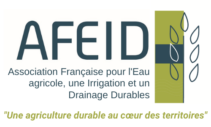This video (in Arabic with French subtitles) illustrates how to initiate a local participatory approach to groundwater. In Aousja, in the governorate of Bizerte in Tunisia, the participatory approach was based on modelling the past, present and future governance of groundwater with actors in the area. Following the construction of individual models through interviews, two workshops were held to discuss the results using the visioning and future triangle methodology. Some 40 participants were thus able to identify the levers of action to move towards a more sustainable and equitable management of groundwater in the area.
PROJECT OWNER

WITH THE SUPPORT OF

